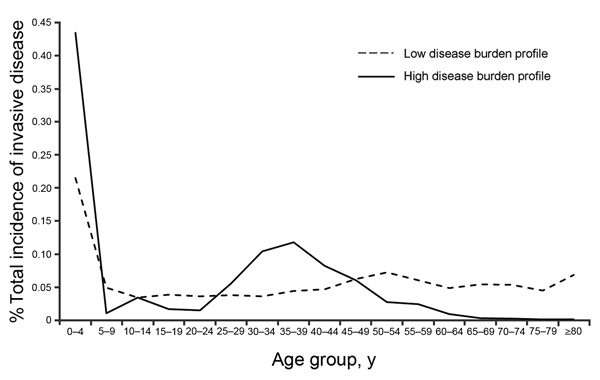Volume 21, Number 6—June 2015
Research
Global Burden of Invasive Nontyphoidal Salmonella Disease, 20101
Figure 1

Figure 1. Proportion of invasive nontyphoidal Salmonella disease, by age group, from low-incidence settings in the United States and high-incidence settings in Malawi and South Africa 2010.
1Preliminary results from this study were presented at the 8th International Conference on Typhoid Fever and Other Invasive Salmonelloses, March 1–2, 2013, Dhaka, Bangladesh.
Page created: May 15, 2015
Page updated: May 15, 2015
Page reviewed: May 15, 2015
The conclusions, findings, and opinions expressed by authors contributing to this journal do not necessarily reflect the official position of the U.S. Department of Health and Human Services, the Public Health Service, the Centers for Disease Control and Prevention, or the authors' affiliated institutions. Use of trade names is for identification only and does not imply endorsement by any of the groups named above.